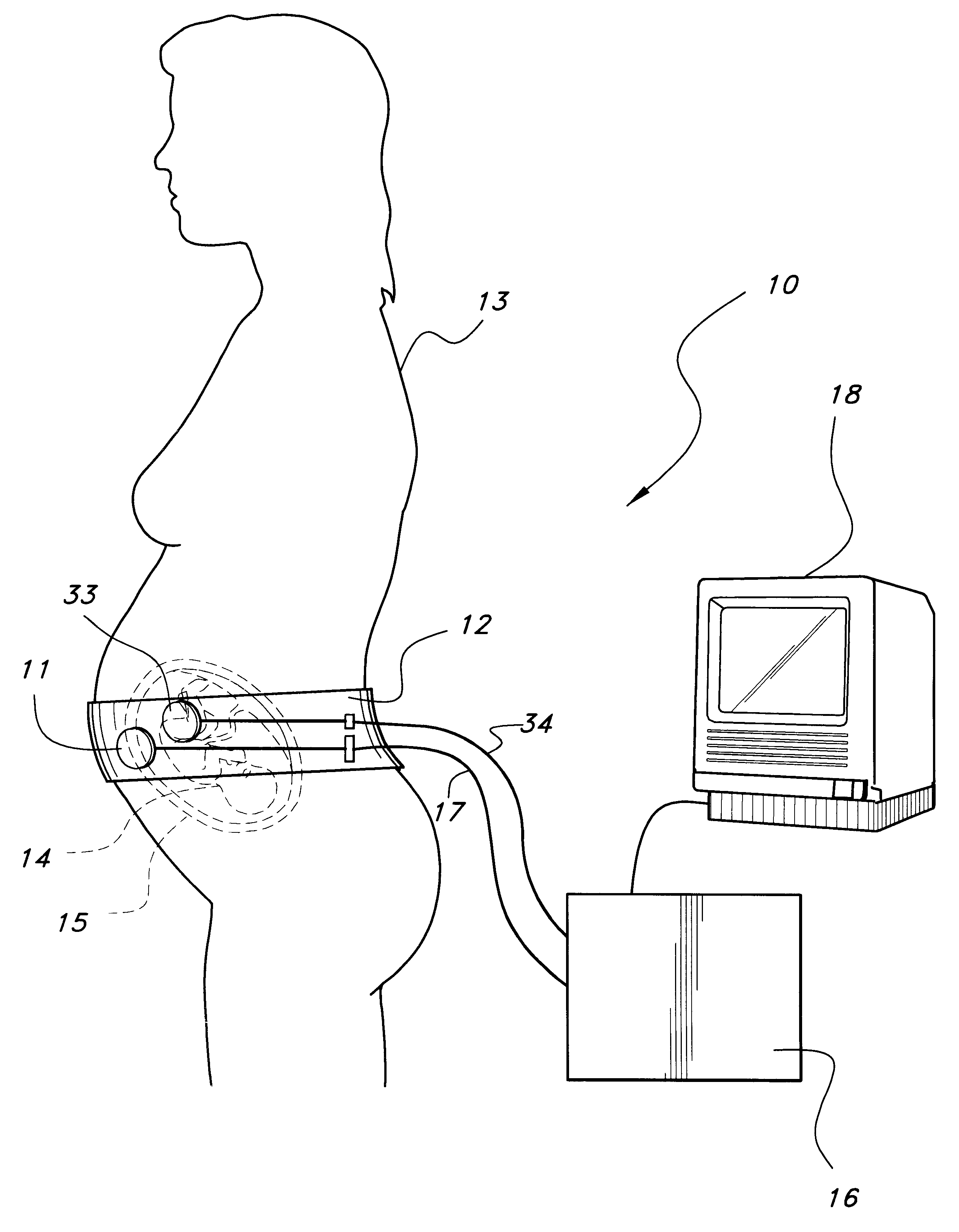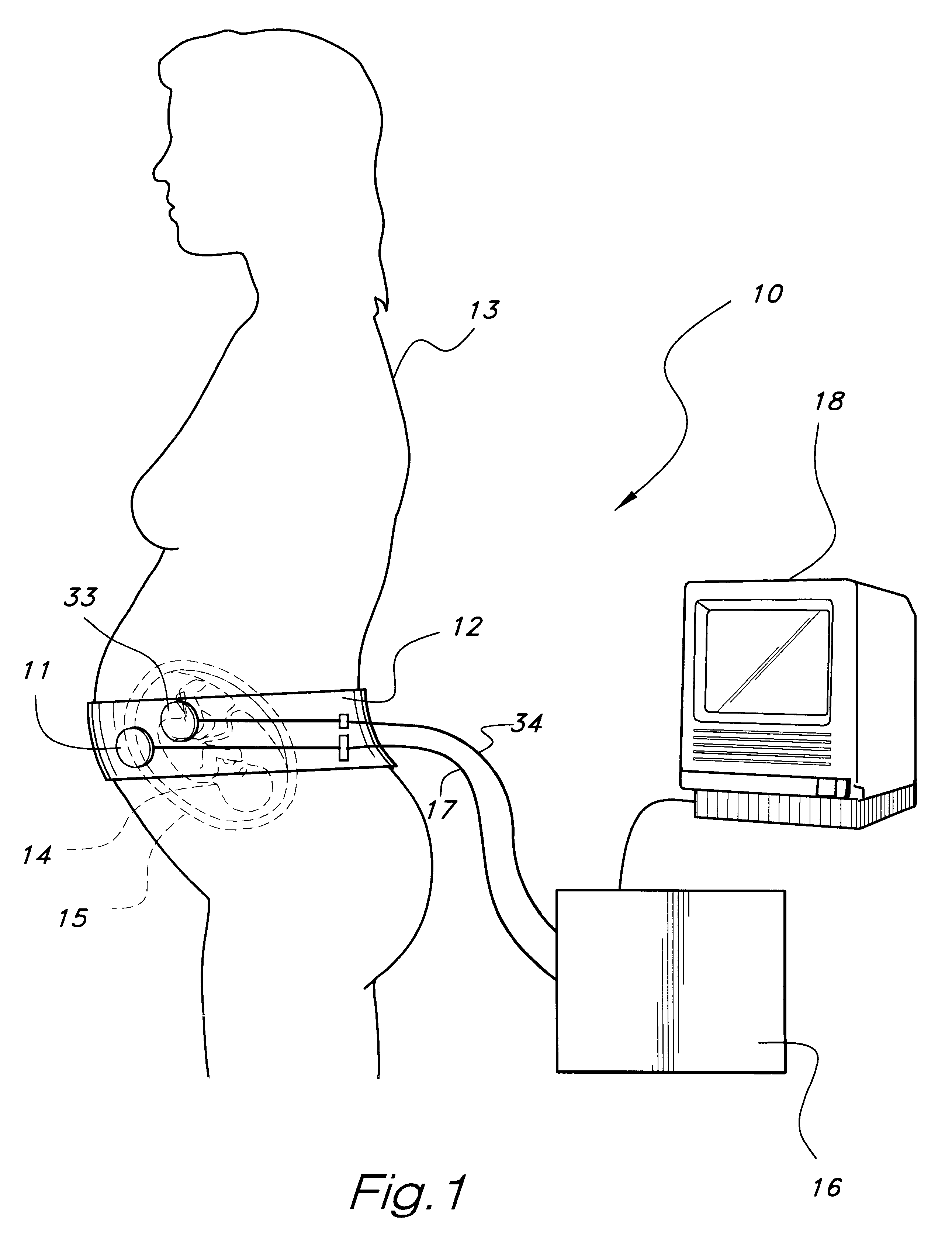Foetal circulatory impedance monitor
a technology monitor, which is applied in the field of foetal circulatory impedance monitor, can solve the problems of semi-invasive diagnostic ultrasound, uncertainty about the potential adverse effects of exposing the foetus to ultrasound, and lack of quantitative measurement of foetal circulatory impedance on a continuous basis or at least over long periods of tim
- Summary
- Abstract
- Description
- Claims
- Application Information
AI Technical Summary
Benefits of technology
Problems solved by technology
Method used
Image
Examples
Embodiment Construction
A device for monitoring a human foetus is generally depicted as 10 in FIG. 1. While adapted to monitor a human foetus, the device 10 could undergo relatively minor modification and be used for the monitoring of the foetus of another mammalian animal, such as a horse.
The device 10 includes a PVDF piezoelectric sensor 11 and electrocardiograph electrode 33 mounted in a belt 12 wrapped around the waist of the mother 13. In use, the belt 12 is adjusted and tightened so as to position the sensor 11 and electrode 33 proximate the position of the foetus 14 in the uterus 15.
The sensor 11 is connected to a processing system 16 by two electrical leads 17 attached between electrodes on the sensor 11 and electrical inputs of the processing system 16. The voltage signals produced by the sensor 11 on the detection of movement by the foetus 14 travel along the leads 17 and are detected by the processing system 16.
The electrode 33 is connected by lead 34 to an electrocardiograph that comprises a co...
PUM
 Login to View More
Login to View More Abstract
Description
Claims
Application Information
 Login to View More
Login to View More - R&D
- Intellectual Property
- Life Sciences
- Materials
- Tech Scout
- Unparalleled Data Quality
- Higher Quality Content
- 60% Fewer Hallucinations
Browse by: Latest US Patents, China's latest patents, Technical Efficacy Thesaurus, Application Domain, Technology Topic, Popular Technical Reports.
© 2025 PatSnap. All rights reserved.Legal|Privacy policy|Modern Slavery Act Transparency Statement|Sitemap|About US| Contact US: help@patsnap.com



